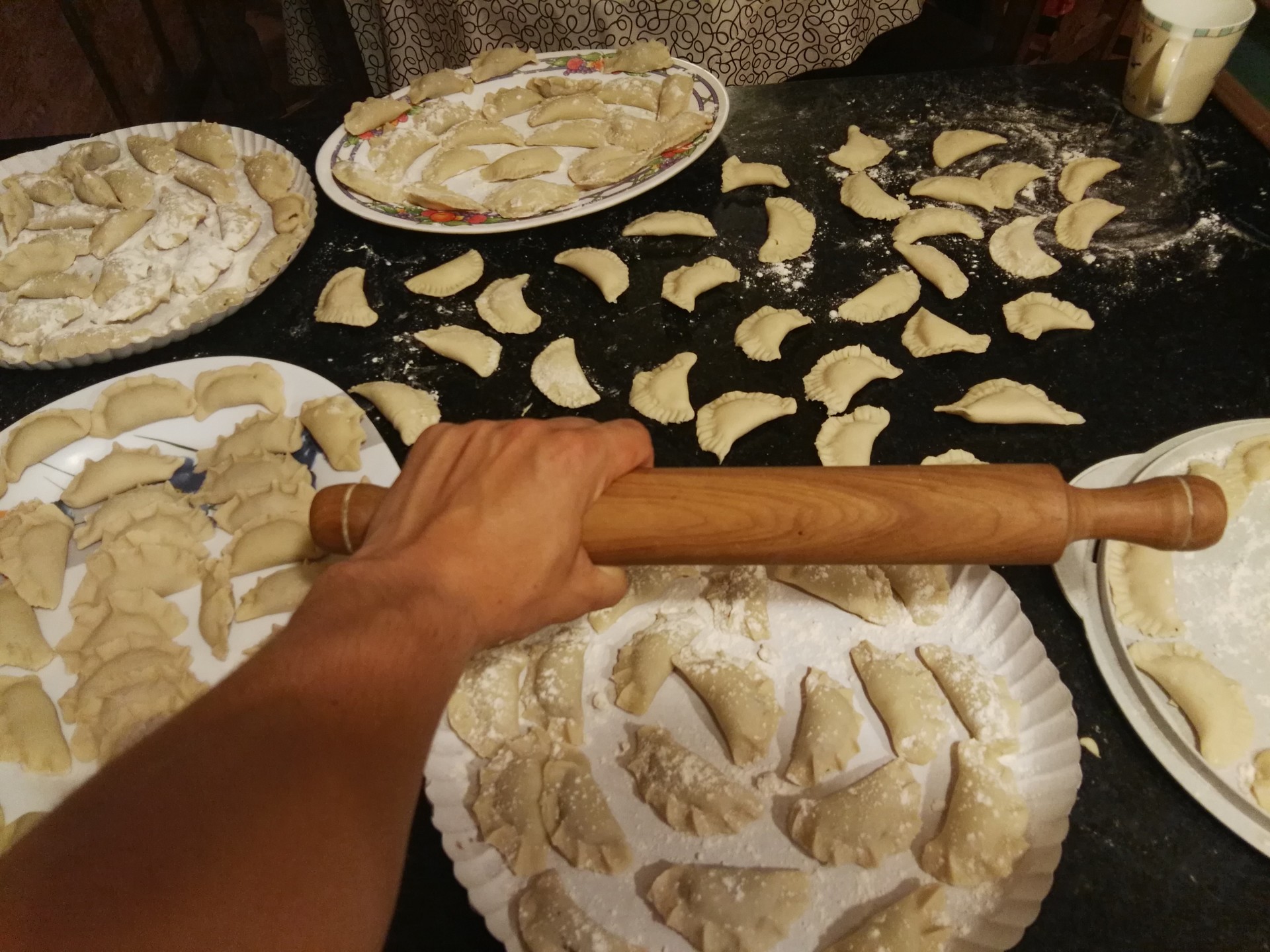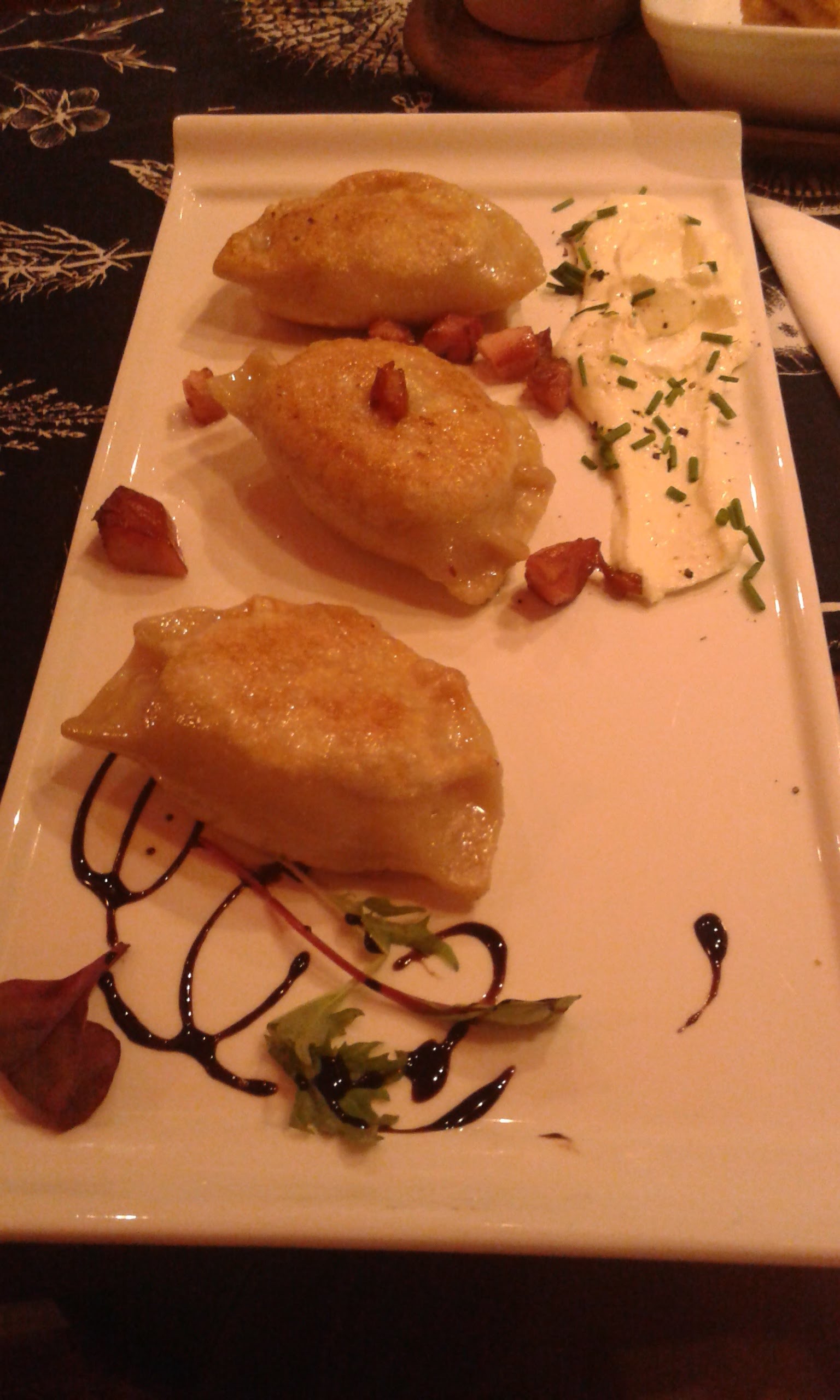Pierogi an (impossible) ultimate guide
The quintessence! The class! The taste! The flavour! The genius!
There are some dishes that are so brilliant that they become a symbol of the country. You have pizza from Italy, ramen from Japan, Bratwurst from Germany, fish & chips from the UK, burgers from the US and ceviche from Peru. They are people’s favourites, they are tourists’ favourites, they are the favourites. They have unique taste, fascinating history, and special place in hearts of locals.
And definitely pierogi can join the club. And mark my words: THEY WILL SOON BE THE NEXT MOST TRENDY THING amongst instafood and cuisine-lovers.
I kid you not.

YES! I LOVE PIEROGI!
I am mental for them, and if someone tells me they don’t like pierogi I’ll force them to try it second time. And if this doesn’t work then a third time. And if the case is still hopeless...well we can’t be friends.
Luckily, there is no way anybody could despise pierogi.

PIEROGI? WHAT IS THAT?
Or maybe what are those? These are small dough pockets filled with savoury or sweet filling and cooked by boiling and sometimes pan frying.
God! Like seriously?! You can’t talk about pierogi like you were reciting a dictionary or an IKEA furniture manual.
Pierogi are filled with love and passion, not just any filling. When Christmas comes pierogi are second most anticipated thing, right after Santa Claus. And unlike the bearded man in a red coat, you can believe in pierogi!
If you followed the ‘IKEA manual approach’ to pierogi you’d learn that there are only three savoury types: ruskie, z mięsem and z kapustą i grzybami (don’t worry about the names, I’ll explain them) and then two sweet types z jagodami, and z serem.
But pierogi are craft of affection. So don’t be fooled by the dull guides who’d limit the pierogi to only these five types. Don’t listen to those who can only name 3 different fillings of pierogi. They sure have no idea how versatile this dish is. And never, ever, ever call pierogi ‘dumplings’.

SO WHAT SHOULD I CALL THEM?
You might remember that in my previous post about Toruń (you can find it here) I mentioned that pierogi should not be referred to as ‘dumplings’. I know that in most of the restaurants and Polish cuisine guide books you’ll encounter this naming. It is because people in Poland often can be very shy and worried that pronouncing Polish names might be too demanding for foreigners. That’s why they prefer to go for the easiest way possible and use the name dumplings.
It is not incorrect to use such nomenclature. Technically pierogi as well as Georgian khinkhali, Italian ravioli, or Lithuanian pielemieni originated from Chinese recipes widely known as ‘dumplings’. And it’s true - the idea of making dough pockets with fillings came from those ingenious people living in the far East (if you’re based in Europe) and were brought to Poland probably during the conquest of Genghis Khan. But since it came to here it has been reshaped, readapted and remade by some of the most creative women and men living in the Polish countryside. Even though we don’t know their names, you can think of them as the best DJs in the history of food. Because what they came up with is beyond amazing.

TELL ME MORE! I’M HUNGRY!
Oh I bet you are. That’s why you should have a look at the list below, to know exactly what you want to order. But before you start reading it please bear in mind that pierogi are passion for some chefs and as a dish they are truly versatile, that’s why this list by no means can be called ultimate. What’s more in each house even the same types of pierogi are made in different ways often following the recipes inherited from grandmothers or even their grandmothers.
-
ruskie - in Polish it means ‘Russian’ even though hardly anyone in Russia has heard of them, in fact in Ukraine they’re called ‘Polish’ which is probably more accurate; these gems are filled with a mixture of potatoes, Polish white cheese, caramelized or deep fried onions and very often loads of black pepper to ensure they have profound taste; in many places they will be served with a sour cream served on top;
-
z mięsem - something for those who are ‘meat-eaters till death’; filled with mince meat but its seasoning varies from place to place, it can be quite spicy or quite mild, usually served with a garnish of fried onions and bacon;
-
z kapustą i grzybami - yeah, I know it is a bit of a tongue-twister, and this is a bit of an unexpected taste for you but don’t be afraid to try it: it is a mix of fried sauerkraut and forest mushrooms, its slightly sour taste is something truly extraordinary and served with pan-fried onions they are one of my favourites;
-
sybirskie - not so famous but equally brilliant type of pierogi, named after Siberia: a Russian region truly important for Polish identity as it was the place of detention of Polish independence fighters who opposed the Tsar (regardless if it was Mikolaj I or J. Stalin) anyway the pierogi sybirskie are of something way more pleasant ! These are stuffed with loads of mince meat and garlic to make them unusually spicy;
-
z kaszą gryczaną - I know, the name looks like a Wi-Fi password, these pierogi are stuffed with something unusual for many foreigners: buckwheat groats, a very characteristic type of crop cultivated in this part of Europe; if the chef knows what type of seasoning to use they are bound to be some people’s favourites (not only vegans);
-
z soczewicą - here one of the most versatile dishes meets one of the most versatile legumes: lentils! These can really stuff the whole;
-
z boczkiem, porem i serem - it literally translates as ‘with bacon, leak and cheese’ and that’s exactly what you get, they can really be fantastic;
-
z twarogiem/ z serem - both names translate as ‘with Polish white cheese’ called ‘twaróg’ but watch out because these beauties are sweet! They are some of the favourites for a summer menu and their taste truly belongs to this part of Europe. I personally love to add a bit of butter on top and then sprinkle it with cinnamon,
-
z jagodami - these sweet pierogi are made with blueberries and are bound to make your mouth purple, as blueberries used to make them are some of the finest in the world and have loads of juice because Poland is covered in beautiful forests, some of the best pierogi z jagodami I’ve eaten can be found in villages around Poland’s tallest mountains Tatry;
-
z porzeczkami - one of the summer time favourites, little dough pockets filled with red or black currant, making it a little sweet and sour delight for especially when you’re chilling by one of the Polish lakesides (you can read more about Polish lakes here)
-
leniwe - their name translates as the ‘lazy pierogi’, and it is probably because they’re quite easy to prepare as they don’t have any filling! Instead you get pieces of some of the most delicious sweet dough covered in melted butter, sugar and cinnamon, a dish from heavens!

SPECIALITÉ!
I love pierogi and I am so certain you’ll fall for them as well simply because I tried it many times on my friends and it never failed. One of them has given the pierogi probably the most accurate and the best review when he said
‘If pierogi and barszcz* were a French invention they would be a worldwide specialité - this is how amazing they are’
PIEROGI AND TORUŃ
Toruń is a great place to have a go and try pierogi because it has got some of the best places specializing in this dish. Feel free to pop into Pierogarnia Stary Toruń where you can enjoy an endless list of pierogi, also oven baked ones, pay a visit to Kuranty where I remember some of the nicest ruskie pierogi I had, check out Pierogarnia Leniwa, and try out Piąta Klepka. They all serve brilliant pierogi.
There is another place I’d like to mention: Bar Pierożek which is run by my old friend from early childhood. To say the least: if he makes pierogi the way he played football you are in really good hands!
You can find his bar here: Targowisko Miejskie ul. Szosa Chełmińska 31/35.
*barszcz -a traditional Polish soup, sort of a beetroot stock. Served in many different ways, also as a form of a hot drink.
Photo gallery
Want to have your own Erasmus blog?
If you are experiencing living abroad, you're an avid traveller or want to promote the city where you live... create your own blog and share your adventures!
I want to create my Erasmus blog! →




















Comments (0 comments)